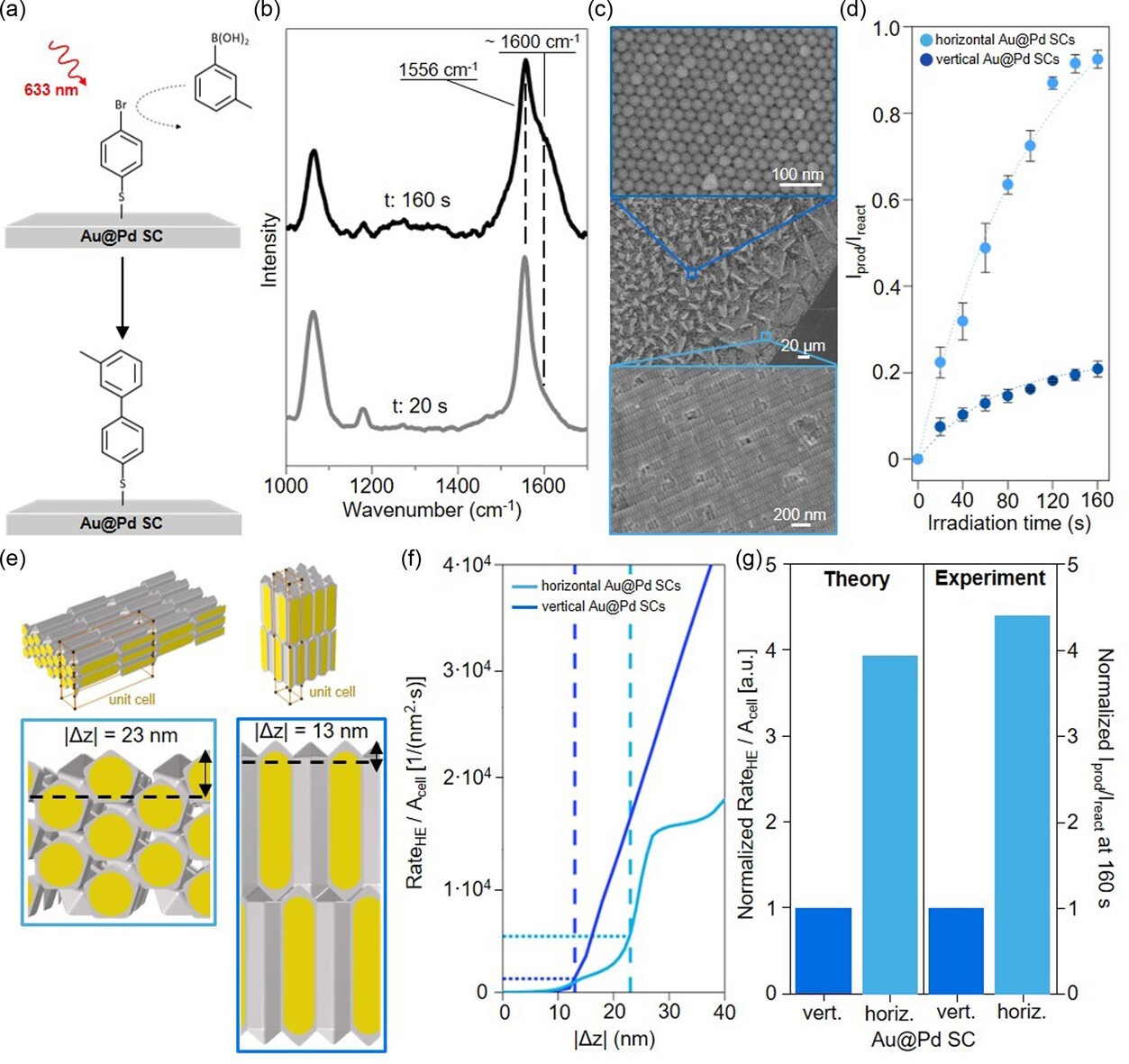Faceted 3D Supercrystals for Plasmonic Photocatalysis: Design, Reactivity, and Operando Studies
 |
13/10/2025 Solar-driven plasmonic photocatalysis has emerged as a powerful tool to enhance chemical reactivity, improving the efficiency and selectivity in a large number of transformations. Plasmonic nanoparticles are often implemented in photocatalysis as colloidal dispersions but they face issues related to the reduced photoactivation ofthe metallic surface in concentrated solutions and poor longterm colloidal stability. To overcome these limitations, 3D plasmonic supercrystals (SCs) created through the depletion- and evaporation-induced self-assembly of metal nanoparticles as novel heterogeneous plasmonic photocatalysts are introduced. They present large electromagnetic field enhancements associated to the formation of regular arrays of plasmonic hot spots, leading to improved chemical reactivities through the generation of hot charge carriers. To demonstrate this, two challenging organic transformations are chosen, an oxidative polymerization and different C─C cross-coupling reactions, that can be activated by modifying the chemical composition of the assemblies. The anisotropic shapes ofthe building blocks lead to the formation of3D SCs exposing different surfaces. Importantly, by performing operando surface-enhanced Raman spectroscopy at the single SC level, the surface-dependent reactivity ofeach individual plasmonic superstructure is unveiled. The combined experimental and theoretical approach provides with key insights into structure-function correlations and offers guidelines for the rational design of versatile SC photocatalysts. This work has been led by Charlène Brissaud and Miguel Comesana Hermo @ ITODYS (Univ. Paris-Cité). DOI: https://doi.org/10.1002/sstr.202500481 |